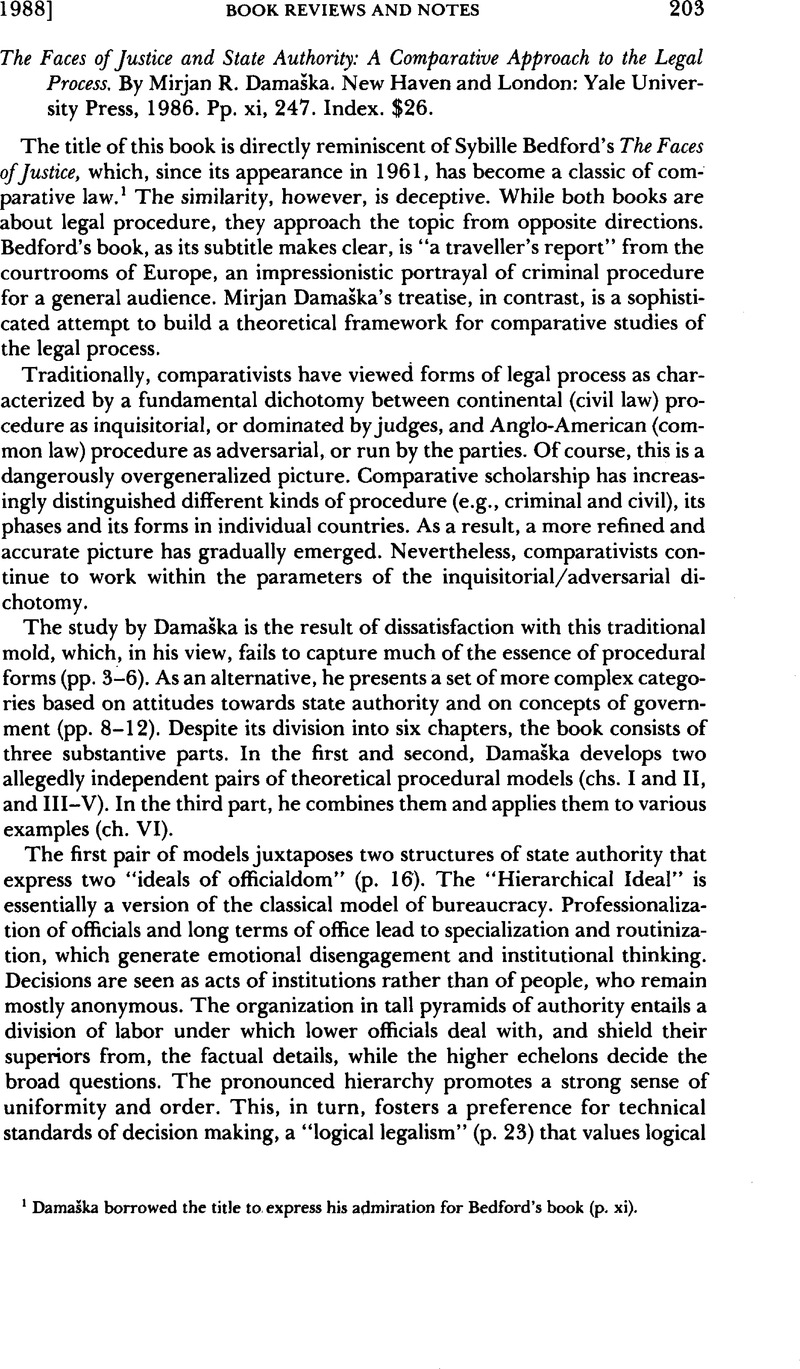Article contents
The Faces of Justice and State Authority: A Comparative Approach to the Legal Process. By Mirjan R. Damaška. New Haven and London: Yale University Press, 1986. Pp. xi, 247. Index. $26.
Published online by Cambridge University Press: 27 February 2017
Abstract

- Type
- Book Reviews and Notes
- Information
- Copyright
- Copyright © American Society of International Law 1988
References
1 Damaška borrowed the title to express his admiration for Bedford’s book (p. xi).
2 Witness the well-structured and detailed table of contents (pp. vii-x).
3 Could it be that they indicate the desire of a continental emigrant, operating in the still somewhat alien American culture, to build himself a more familiar intellectual environment out of elements from his European heritage? At least from the perspective of one in a similar situation, such a desire would be completely understandable.
4 Weber’s “ideal types” are mentioned only in passing (p. 9).
5 This is true not only for the concept of “pure types” itself, but also for the idea of designing these “pure types” along the lines of structures of authority. See M. Weber, Economy and Society 212–301 (G. Roth & C. Wittich eds. 1978). Even the dual typology with two independent sets of variables that can be combined into four constellations is borrowed from Weber. See Max Weber on Law in Economy and Society xlii-lii (M. Rheinstein & E. Shils trans. 1954); see also A. Kronman, Max Weber 76 (1983). This diminishes the originality of Damaška’s approach, but, of course, not necessarily its promise.
6 Certainly, Damaška must not be misunderstood as claiming that individual procedural features owe their very existence to these concepts. But his fundamental hypothesis is that these features appear in certain typical groups (approaching his ideals to varying degrees) because they all stem from, or are at least compatible with, the same underlying notion of state authority or state purpose.
- 2
- Cited by


